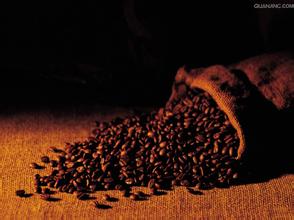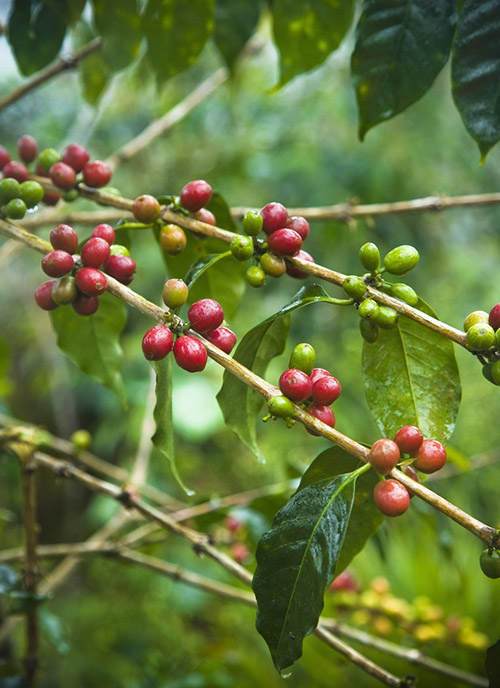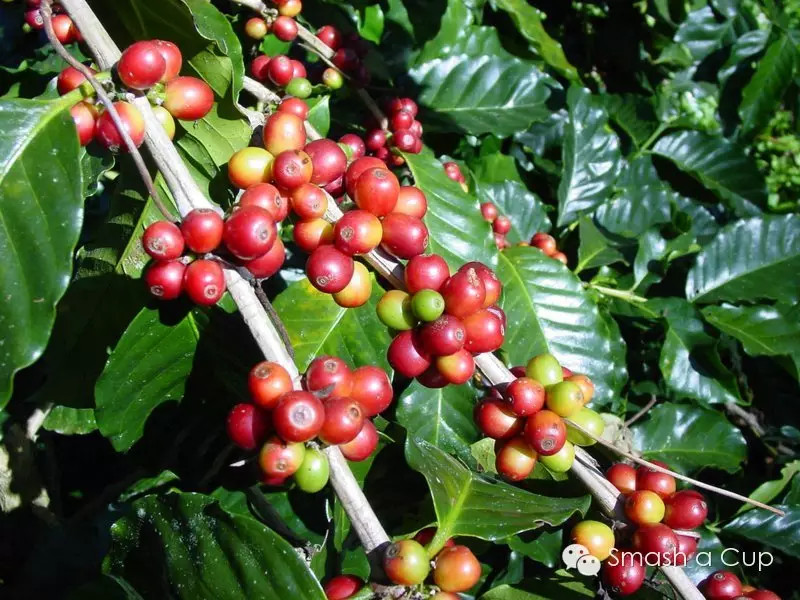Introduction of Indonesia Manning Coffee Bean Fine Coffee introduction to Manor producing area
Diseases and insect pests caused by torrential rains in 2oo6 reduced coffee production in India by 4.09% to 288000 tons, less than the 300000 tons after 2oo6/2oo7 's annual flowering. According to expert analysis, rainstorm and coffee diseases such as stem rot and black rot have reduced coffee production, while the output of small-grain coffee may be reduced from 10.37 million tons to 99700 tons after the rainstorm, while the output of medium-grain coffee is lower than the forecast after flowering period of 196,600 tons, only 188,300 tons. Coffee production in Karnataka, the main coffee growing area, decreased by 8975 tons, while after heavy rains, coffee production in Karnataka was 206000 tons, down from 215000 tons after flowering. Karnataka's production of small-grain coffee decreased from 83000 tons after flowering to 80300 tons, while medium-grain coffee production decreased from 132, 000 tons to 126000 tons. Coffee production in Kerala decreased from 61200 tons after flowering to 59500 tons, including small seed coffee from 1450 tons to 1375 tons and medium grain coffee from 59800 tons to 5810 tons. The coffee production of Tamil Nadu has decreased from 19700 tons to 18200 tons, of which, after the rainy season, the production of small seed coffee decreased from 14900 tons to 13900 tons, and that of medium grain coffee decreased from 4775 tons to 4275 tons. Total coffee production in unconventionally grown areas such as Andhra Pradesh, Orissa and the North-East region is estimated to have decreased from 4400 tons a few months ago to 4275 tons, of which small seed coffee decreased from 4325 tons to 4125 tons, while medium grain coffee production increased from 75 tons to 4125 tons. As excessive rainfall damaged coffee crops, India's coffee production fell to 262300 tons in 2008-09 from 276600 tons in November 2008. The average export price of Indian coffee in 2008-09 was 109266 rupees ($2283) per tonne, up 4 per cent from a year earlier. From January to September 2009, India exported 144920 tons of coffee, down 20% from the same period last year, with an export value of US $304.6 million.
The prospect of coffee production in India in the 2009-10 farming year is good, mainly due to timely rain in March and subsequent supplementary rainfall. India produced 295000 tons of coffee in 2009-10, compared with 262300 tons in 2008-09. India's coffee imports will fall in 2008-09 and 2009-10 due to reduced demand for instant coffee exports. India mainly imports a small amount of low-cost coffee from Indonesia, Uganda, Vietnam and C ô te d'Ivoire as an added value for re-export. In fiscal year 2007-08, India imported about 19000 tons of coffee. India's coffee exports fell by 21 per cent in the year ending September 30 as excessive rainfall damaged coffee crops in India's main coffee-growing regions and demand was reduced by the global financial crisis. India's Tata Coffee Co., Ltd. and other export companies exported 181069 metric tons of coffee in the year to September 30, compared with 227779 bags in the previous year; exports fell 33% year-on-year to US $588.9 million

Important Notice :
前街咖啡 FrontStreet Coffee has moved to new addredd:
FrontStreet Coffee Address: 315,Donghua East Road,GuangZhou
Tel:020 38364473
- Prev

Alida Manor (Elida) Sun treatment of Panamanian Fine Coffee
There are three main varieties planted in Elida Manor, namely, Catuai (Kaduai), Typica (Iron pickup) and Geisha (Rose Summer). The processing plant of the manor is halfway up the hillside. After the coffee is picked, it can be transported to the factory for processing as soon as possible to ensure that the quality of the coffee fruit is not affected. Of course, the environment of Elida is also suitable for growing other high-quality temperate crops, especially
- Next

Semi-washing treatment of Carmen Manor in Panama WBC entry bean list
Carmen Manor has 60% of the natural primeval forest, where coffee trees are planted and grow in the shade of these natural trees! As a result, the farm has been certified by Rainforest Alliance Association as ECO- OK environmentally friendly coffee! The coffee beans are harvested from late December to March of the next year, and the mature coffee cherries are harvested artificially, and the waste produced in the fruit treatment (if the meat or juice are properly piled up.
Related
- Detailed explanation of Jadeite planting Land in Panamanian Jadeite Manor introduction to the grading system of Jadeite competitive bidding, Red bid, Green bid and Rose Summer
- Story of Coffee planting in Brenka region of Costa Rica Stonehenge Manor anaerobic heavy honey treatment of flavor mouth
- What's on the barrel of Blue Mountain Coffee beans?
- Can American coffee also pull flowers? How to use hot American style to pull out a good-looking pattern?
- Can you make a cold extract with coffee beans? What is the right proportion for cold-extracted coffee formula?
- Indonesian PWN Gold Mandrine Coffee Origin Features Flavor How to Chong? Mandolin coffee is American.
- A brief introduction to the flavor characteristics of Brazilian yellow bourbon coffee beans
- What is the effect of different water quality on the flavor of cold-extracted coffee? What kind of water is best for brewing coffee?
- Why do you think of Rose Summer whenever you mention Panamanian coffee?
- Introduction to the characteristics of authentic blue mountain coffee bean producing areas? What is the CIB Coffee Authority in Jamaica?

